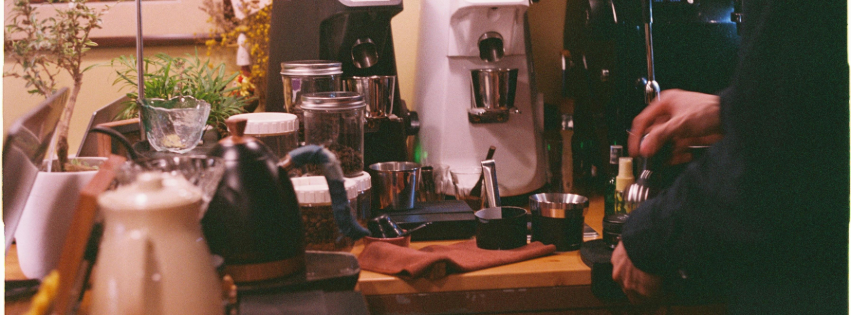Validation vs Experience in Artisan Coffee
Barista Tools: WDT, OCD, Dosing Cups, and Scales
Question from an Alumnus – Joe
Hey guys,
I have a few questions for you.
I remember pretty well that our Trainer said in the Barista class to NOT GO ON YOUTUBE 😉, but I’m the curious and analytical type, and I wanted to know what internet people have to say.
I’m NOT doubting any of the steps or theories we were taught in the Barista course, but I would like to know (in a few words) what are your thoughts or critiques on the use of the following tools:
- WDT tool?
- OCD tool?
- Dosing cups?
- Scale under the cup to achieve a 1:2 ratio?
Again, I’m not questioning the theory from class, but I’ve seen these tools being used frequently and wondered what your position is on them.
Thanks and have a great evening!
Question from an Alumnus – Joe
Curiosity Is Good—But Stay Critical
We’re more than happy for you to research coffee tools and to ask questions about what professionals are using. This kind of curiosity is incredibly important—keep it up!
Our only suggestion is this: keep your logical mind turned on while you do your research. That’s at the core of what we teach.
WDT Tool: Still Relevant or Redundant?
Take the WDT tool as an example. What is it designed to do? What problem is it supposed to solve?
- What specific problem does this tool claim to fix?
- When was it invented? What year and by whom?
- And more importantly: does it actually fix it?
What you’ll often find is that most tools are well-intentioned and do address a real issue. Our concern isn’t about whether the tool works—it’s about whether it’s necessary in a professional setting that already uses quality equipment.
Let’s return to the WDT. It’s supposed to:
- Break up clumps in the ground coffee
- Evenly distribute the coffee in the basket before tamping
OCD Tools, Dosing Cups & Espresso Scales: Are They Worth It?
OCD tools... I thought they were obsolete? And if you want to single dose (no commercial shops should bother with single dosing, popcorn effect aside), I guess you can spend money on a dosing cup—but that’s what yogurt containers are for?
And a scale on the tray is fine as long as you calibrate your scale, but there are more practical solutions, especially in a professional coffee shop.
Of the things you mentioned, the WDT tool is probably the most relevant, but modern commercial grinders have clump crushers that already do the job of the WDT. So if there are any further gains to WDT a clump-crusher dose, it is probably minimal.
So in other words, it’s not worth it to slow down your workflow for such small gains.
But if you want to obsess at home, go for it. But never at work.
And if it did make a difference, you would have to be able to taste the effect blind each time—or else, why bother doing it?
Rely on your palate vs. gadgets. Gadgets and scales can’t taste.
Do Professional Chefs Buy Gimmicks?
One last word. Do you think chefs like Gordon Ramsay are buying kitchen gadgets?
Top chefs are usually top chefs because they are better at using the salt shaker than the average cook. And why are they better at salting? Because they are better at tasting things.
Same holds true for baristas. The best baristas I know are the ones who can taste. And definitely not the ones who spend 100 dollars for an OCD tool.
By the way… informal survey, but most reputable shops that are renowned for their coffee skills abandoned their OCD tools years ago. The average home user never got the memo.
Workflow vs. Gadget Obsession
If a modern grinder fixes the root problem, why keep the tool?
Also, think about workflow. The WDT adds time to service.
Have you noticed how much slower service is in some of the cafés you’re visiting? And have you noticed that you’re already faster than many of those baristas—with less training?
The training you received in two days gives you faster service speeds than most in the cafés in Toronto.
Imagine if those baristas were also using the WDT. Think of how much more mess and time would be added to the service.
Why Are We Seeking Validation from Coffee Influencers?
Now, let’s zoom out for a second and ask a bigger question:
Why do so many people feel the need to get the approval of internet coffee fanatics in the first place?
- Do you think their machines have even been SCACE’d or measured for consistency?
- Have you tasted coffee with them?
We did that with you. In person. Blind. Multiple times.
We calibrated your taste, we taught you how to evaluate coffee.
So why would someone with a YouTube channel and a lot of jargon hold equal or more weight than what you learned firsthand?
Why do you still not trust your own first-hand experience?
How to Vet Coffee Advice (and Coffee People)
- If they roast, ask them to send you coffee.
- If they’re local, ask them to pull you a shot.
- Taste blind with them several times and see how consistent their opinions are.
And when we say blind, we mean truly blind.
No one can know what coffees are on the table. No subtle signs. No discussion beforehand about what coffee you brought for the tasting. You should have an independent person set up the blind tasting—otherwise, you’ve already set up expectations and will pick the coffee based on past experience.
We did that with you.
So if your trust in your own ability still wavers—ask yourself why.
Final Thoughts: Tools vs. Technique in Specialty Coffee
- Keep asking questions
- Watch videos with a critical eye
- Visit cafés and observe workflows
- Stay informed—but don’t blindly follow trends
- Learn to recognize the difference between tools that solve problems and tools that signal identity
Because at the end of the day, chasing internet approval can distract you from what actually matters: Real-world skills. Real coffee. Real people.
Further Reading: Origins of the WDT Tool
If you want to read the original article from 2005 that launched the WDT trend, you’ll see that the tool’s intention was based on a time in our coffee history when grinder technology wasn’t where it is today:
👉 Weiss Distribution Technique Article (2005)
The tool had importance—and still does today if your grinder is producing clumps and inconsistencies.



